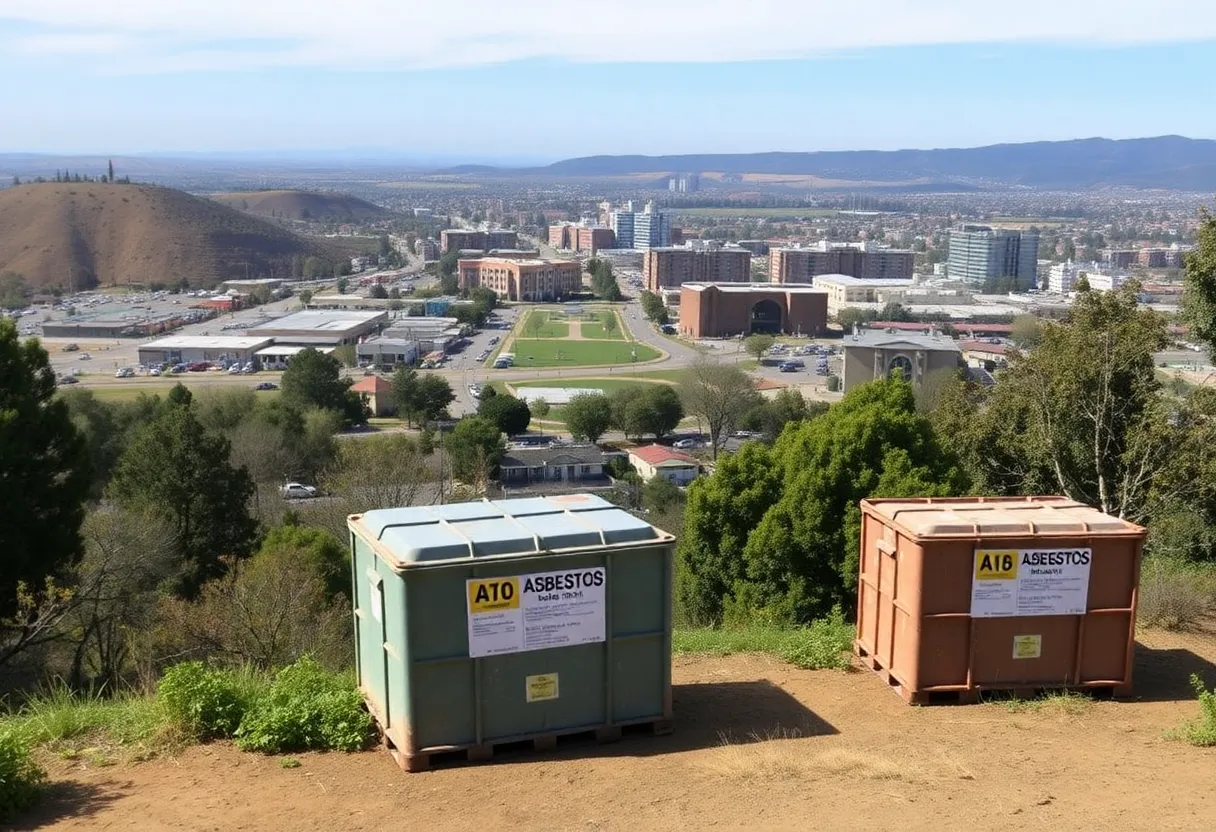News Summary
The U.S. Army Corps of Engineers is temporarily storing hazardous asbestos at Temescal Gateway Park as part of wildfire cleanup efforts.
Asbestos Temporarily Stored at Temescal Gateway Park Amid Wildfire Cleanup Efforts
In a surprising turn of events, the U.S. Army Corps of Engineers (USACE) has begun temporarily storing hazardous asbestos material at Temescal Gateway Park in Pacific Palisades as part of ongoing cleanup efforts after devastating wildfires swept through the area. The park, known for its natural beauty and as a popular entry point to the Topanga State Park system, has been closed to the public since cleanup operations commenced.
Asbestos and Wildfire Damage
The asbestos being stored originates from homes severely damaged or destroyed in January’s wildfires, which scorched an astonishing 50,000 acres and obliterated over 16,000 structures in locations such as Pacific Palisades and nearby Altadena. Asbestos, classified as a known carcinogen, poses potential health risks if not managed properly, igniting concerns within the local community regarding environmental safety.
Storage and Safety Measures
To mitigate the risks associated with handling asbestos, the USACE has implemented strict measures. The asbestos has been securely double bagged and placed inside triple-lined, sealed containers, which are monitored and maintained in a controlled environment as mandated by both state and federal regulations. The USACE has indicated that this material will remain in the park for no longer than 24 hours before being transported to a licensed disposal facility.
In addition to the stringent storage protocols, both USACE and Los Angeles County agencies are conducting air monitoring to ensure the safety of the surrounding community. A representative from the USACE emphasized the public health risks associated with uncontrolled asbestos exposure, reinforcing the importance of its management in controlled settings.
Community Concerns and Cleanup Efforts
As part of the ongoing cleanup operations, which fall under Phase 2 of FEMA’s disaster response strategy, the USACE is tasked with the removal of hazardous ash, debris, and contaminated soil. This process is conducted in coordination with local and state partners, ensuring strict adherence to environmental standards. However, it’s important to note that soil testing services for residents are not provided by the Corps, although they are involved in analyzing certain rubble materials for asbestos content.
Recycling and Waste Management
In an effort to increase sustainability, clean concrete from the debris is being crushed and recycled at a temporary facility located on Temescal Canyon Road, conveniently situated across Sunset Boulevard from the park. This recycling initiative underscores the dual goals of safety and environmental stewardship in the aftermath of the wildfires.
Looking Ahead
As the cleanup progresses, officials are focused on streamlining materials management, workforce deployment, and the legislative processes related to disaster recovery. The park, under the management of the Mountains Recreation and Conservation Authority along with the Santa Monica Mountains Conservancy, will remain closed to the public until it is deemed safe for reopening, ensuring that the community is protected from any remaining hazards.
The use of Temescal Gateway Park for the short-term storage of asbestos highlights the complexities and challenges faced during disaster recovery, necessitating a delicate balance between swift action and community safety. As cleanup efforts continue, residents are urged to stay informed and vigilant as efforts are made to restore their community and protect public health.
Deeper Dive: News & Info About This Topic
HERE Resources
New Laws May Threaten Mesothelioma Payouts
NYC Schools Face Critical Asbestos Inspection Backlog
Demolition of Hotel O in Jackson Marks a New Chapter for Community Safety
Shock Audit Reveals Asbestos Inspection Failures in New York City Schools
New York City Schools Fail to Meet Asbestos Inspection Requirements
Understanding Mesothelioma Prognosis: Key Factors
Whittaker, Clark, & Daniels Faces Backlash Over Mesothelioma Claims Amid Bankruptcy
Johnson & Johnson’s Talc Bankruptcy Plan Shot Down in Court
Ilkley Town Hall to Undergo Essential Renovations
Huge Scandal as Hazardous Asbestos Left on Bristol Pavement
Additional Resources
- YoVenice: Asbestos Stored at Temescal Gateway Park
- Wikipedia: Asbestos
- Westside Current: U.S. Army Corps of Engineers Storing Asbestos
- Google Search: Asbestos Wildfires
- Santa Monica Mirror: Invasive Plant Species in Temescal Gateway Park
- Google Scholar: Asbestos Health Risk
- YoVenice: Three-Level Venice Canal Home Unveiled
- Encyclopedia Britannica: Asbestos



















